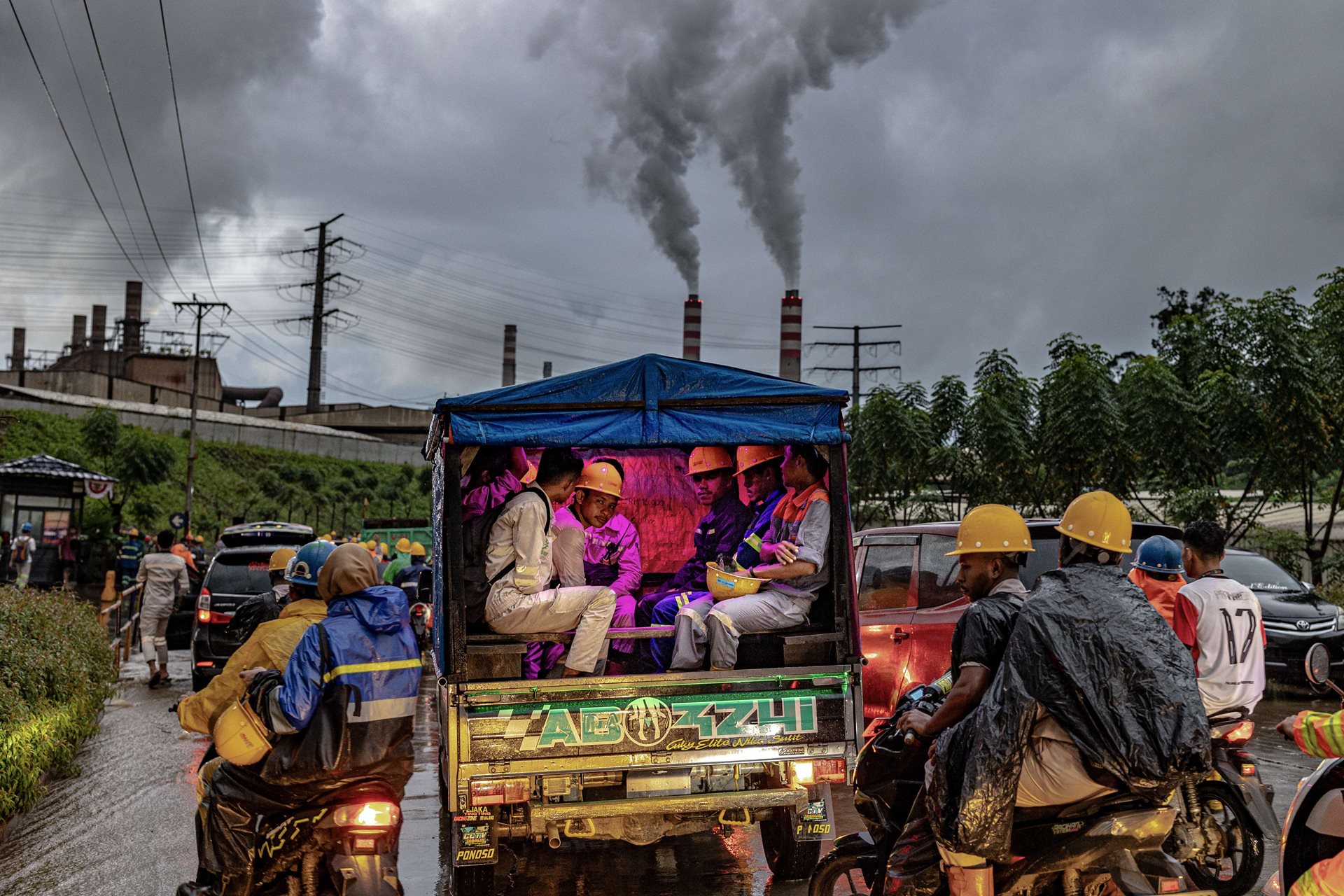Workers ride towards a nickel smelting and processing plant, in Weda, Halmahera, Indonesia, amidheavy rains that continued for two days, causing flooding that impacted some 6,500 people.
Weda Bay on Halmahera, an island in the North Maluku province of Indonesia, now accounts for 17% of global nickel production – but at a cost to the environment.
Nickel mining in Indonesia has ramped up in the past decade. Indonesia is now responsible for almost half the global output of a metal essential for electric vehicle batteries and renewable energy storage. In 2020, the Indonesian government banned the export of nickel ore, aiming to develop a domestic industry for nickel products, rather than just exporting raw materials. This forced companies like those operating in Weda Bay to process the ore before selling it. Both the mining and processing of nickel can harm the environment.
Before nickel mining, villagers around Weda Bay relied on fishing, and farming crops such as cloves, cocoa and coconut. Today, thousands work in industry, and industrial activities have replaced forests and farmland, stripping the environment of its natural defenses, and polluting air and water. Climate Rights International (CRI) reports that at least 5,331 hectares of tropical forests have been cut within nickel mining concessions on Halmahera (although those responsible claim that they are replanting many local species of trees). Research indicates that such deforestation leads to longer and more frequent flooding.
In addition, air pollution from nickel smelting and coal-based energy production has surged, with one local health center recording a 25-fold increase in respiratory diseases between 2020 and 2023. Local fishermen report significant drops to their catch and an ocean polluted by oil and industrial effluent. Deforestation upstream turns rivers (a source of drinking water) brown with mud, and is also a threat to some Indigenous peoples, affecting their land rights and traditional ways of life.
Are you a photographer and/or passionate about press freedom? Sign up for our newsletter to stay updated on our annual contest and to hear about exhibitions near you.

